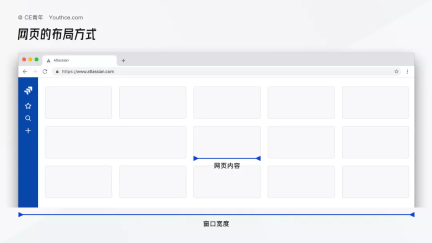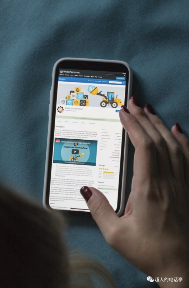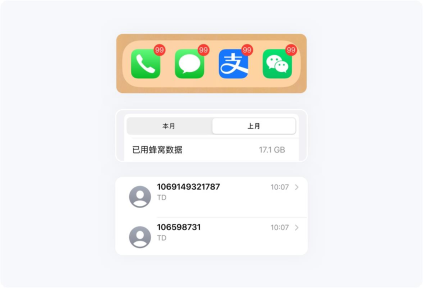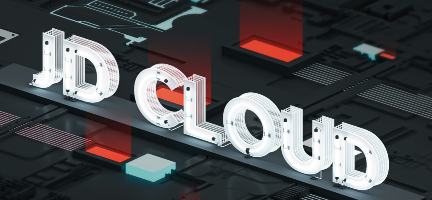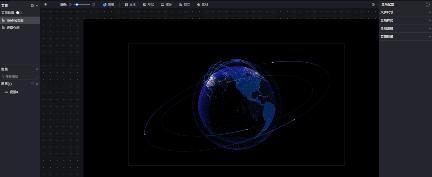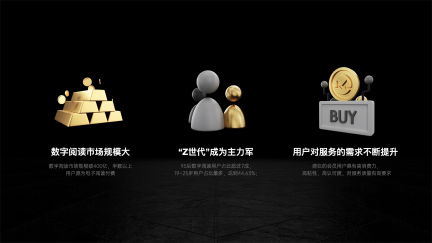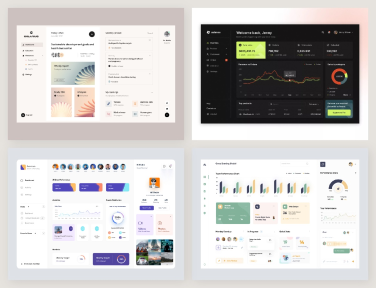
"The beauty of design is that it can light up the sky of creativity. Interactive design is a kind of consciousness and ability that all designers need to have. It can make your design scheme easy for users to understand and operate, so as to quickly achieve goals and create more value for users, the company and even the society." This is a sentence in the preface written by Liu Jin, the author of "breaking the cocoon into a butterfly".
I believe every UI designer is familiar with the word "interaction design". Maybe many people only understand it by drawing prototypes and wireframes, but in fact, the knowledge of interaction design has been used when we make collections. When we show a work, we always need to analyze user portraits, usage scenarios, design goals and competitive products. But have you ever thought about why we should discuss user portraits, usage scenarios, and design goals? What is the purpose of discussing these and what is it helpful for our design?
Dongshanghao's book "win step by step, analysis of the whole process of interaction design" will tell you what interaction design is and how to do it through 9 necessary skills of interaction design. He said in the preface - I hope this book can bring value to you. I have gained, so I also want to share this harvest with you.

1、 What does this book say?
1. What is interaction design?
1.1 purpose of design
Before reading this book, in fact, my concept of interaction design is very vague. Because of long-term entrepreneurship, the work is very miscellaneous. Except for not writing code, I feel I am doing everything else. So this is the first time I understand the concept of interaction design, and when I finished reading it, I found that in fact, what I have been doing has always been interaction design.
Before understanding interaction design, the author raises a question: what is the purpose of design? To be honest, this gave me a great impact when I first read it. In our past work, most people may understand the work content of design by completing the design of prototype drawings, making high-end atmospheric pages, exquisite icons, etc., but you may rarely think about what is the purpose of design?

The author gives a classic case. Mosquito bombers, which made great contributions to the British air force during World War II, look very humble and even a little ugly. However, at that time, the British designer of the aircraft fully considered that the material "aluminum" for aircraft production was very scarce, so he used wood to replace aluminum. It was this seemingly insignificant change that got rid of the restrictions of large smelting plants and professional machinery, reduced the consumption of strategic resources, and reduced the manufacturing difficulty and cost. Finally, this "light as a swallow" wooden bomber dispatched nearly 40000 sorties, dropped more than 100000 bombs, and only 254 were shot down. On average, one was lost every 2000 sorties, and the war damage rate was only 1/3 of that of ordinary bombers.
This is a vivid case that fully reflects the characteristics of the design discipline: design has a strong purpose, and designers need to consider the reality and create under certain restrictions. This also makes design and art have a distinct difference. The purpose of design is to meet needs, while the purpose of art is to express the artist's view of the world.

So if you look at the product disassembly report of the detective carefully, you will find that I will repeatedly emphasize the following sentence in the chapter of user needs analysis every time - the essence of design is to solve needs.
1.2 definition of interaction design
In interaction design, the word "interaction" in English is interaction, in which inter means "mutual", and action means "action", so the intuitive explanation of interaction is "mutual action", that is, the subject acts once, the object acts again, and reciprocates with each other. You come and I go
In his classic book about face 4: the essence of interaction design, Alan Cooper, the father of interaction design, defined interaction design as the practice of designing interactive digital products, environments, systems and services. This definition is actually a little difficult to understand and not very concrete, but it tells us that interaction design covers many fields, and it overlaps and intersects with many designs. The author also compiled a diagram from which we can have a more intuitive understanding of interaction design.

Secondly, the author gives a very grounded example to tell us what interaction design is. That is the bank ATM that we are very familiar with. Have you noticed that when you go to withdraw money, this process is very intuitive. Insert the card, enter the password, choose to withdraw money, enter the amount, wait for the cash, and the card withdrawal is over. This is a complete ATM cash withdrawal process, which is interactive design. It has processes and actions, and needs the cooperation of users and machines.
1.3 capability model of interaction design
In the traditional Internet product development process, interaction design is in the middle of product requirements and interface design. Everyone's understanding of him is generally to draw prototypes and line sketches. But in fact, drawing prototypes is only a small part of the work of interaction designers. The real work of interaction designers is to analyze and mine needs with product managers, formulate product planning, follow the design of the whole product life cycle, and accept the final product development. In my personal opinion, interaction designer is the design translator of requirements. He plays such a very important role in drawing product requirements through design software, so that products, R & D can understand them, and finally go online for users.

What abilities do interaction designers need to master? The author sorts out nine necessary skills, which are scenario thinking, user habits and mental models, design goals, competitive product analysis, process design, design principles, design specifications, prototyping and usability testing. These nine skills are also the core content of this book, which we will explain later. Secondly, you can use this model as a reference tool for interactive learning. For example, you can only draw prototypes now, so you need to cultivate scene thinking and learn competitive product analysis, so that you can have a learning ladder and constantly improve your strength.

1.4 requirements of large Internet companies for interaction designers
This section is actually very interesting. The author analyzed more than 20 Interaction Designer Recruitment positions in Alibaba, Tencent, Netease and other major manufacturers. From the analysis of job description and job demand, he concluded:
For junior designers, it is mainly required that designers can make a reasonable and effective interaction scheme for a certain function. For senior and even expert designers, we need to support app interaction design from a broader perspective, such as the formulation of design strategies, the formulation of design specifications, the formulation of frameworks, and the improvement of member capabilities. In any case, the basic knowledge of interaction design is the foundation of designers' continuous growth.

Speaking of this, I remember that when I learned to play ball when I was a child, the first thing PE teachers did was teach you how to shoot the ball. Many people feel bored. Who can't beat the ball. But you finally find that a player who really plays well must be a player with solid basic skills, and the same is true for designing. If you have no concept of the basic knowledge of design, sorry, you will be eliminated in the future.
2. Design analysis skills
This is the most important and core part of this book. The author makes a comprehensive introduction to the design analysis ability model that interaction design needs to master, including many very vivid cases. When you finish reading, you will find that interaction design is everywhere, and interaction design is really very important.
2.1 target users and scenarios
"Understanding users' expectations, needs and motivations is the basic preparation for design. It points out the way forward for the design plan and lays the foundation for success." For any product, if we ignore the real needs of users, the product will eventually lead to the dilemma of no use. This is a deeper experience for the product design of b-end and SaaS.
What are the pain points of users and how to design and solve our products? If the mining of users' needs is not deep enough, it is likely to be a pseudo demand. The author provides a very practical step for making user portraits. You can finally form a clear user portrait by investigating users, finding key variables, and classifying data.

The author shared a formula to describe the scene, which is a very valuable knowledge point. Through this formula, we can apply it directly when doing user research and product analysis in the future. It can help you describe the user's use scenario very clearly.
"Scene = a certain type of user (who) has a certain desire when something appears around at a certain time (when), a certain place (where), and will think of some means (method) to meet the needs."
Take a simple example: Zhisheng (user) received the announcement of designing the live broadcast of the great detective (something appeared) in his bedroom (location) on Friday evening (time). He found that what he shared today was the problem (demand) that had been puzzling him how to design his portfolio, so he turned on the computer (means) and entered the live broadcast room to listen.
Finally, the author also shared the production of user experience map and user scene map. This is a very detailed introduction to these two display models, which you need to read carefully.
2.2 mental model
Mental model refers to a person's thinking process of the way something works, that is, a person's understanding of the world.
How to understand the mind? For example, when you press the elevator on the top floor, you will press it several times, as if the elevator will come up faster; For another example, when you browse a product and find a camera icon, you will subconsciously understand that it can upload photos or upload pictures; There are also player pages like music products, which will be designed in the style of a vinyl record, allowing users to have an immersive experience from both hearing and vision.
Jiang nanchun, the founder of focus media, has a book called "seizing the mind". In that book, he explained that the mind - only with the hearts of the people and the minds of users, can the brand flourish forever. My understanding of the mental model in this chapter is the mining of user needs. What they care about, like and get used to. If you don't dig and study deeply, your design is likely to make users don't understand it and become a self hi design.
Wangshimu, the person in charge of Netease cloud music, once expressed such a view in "behind the scenes products" - the most taboo in product design is to only know users in their familiar fields and turn a blind eye to other user groups. If you don't study the popular culture of the second dimension, entertainment fashion circle and the urban-rural junction that young users like, it's difficult for you to understand the needs of mass users. Therefore, studying users is a great work that requires long-term persistence.
2.3 design objectives
I don't know if you have this feeling. When you don't have a learning goal, you will be overwhelmed. You don't know what to learn and how to learn. Even if you are at bat, you will also worry about how to improve yourself. But when you have clear learning goals, no matter how small the company is and how low the salary is, you will also have a strong motivation. In fact, when we do design, it's the same.
As a designer, if you want to solve problems and meet needs, you first need to clarify what the problems are, and the establishment of design goals is to establish the problems to be solved in the form of design goals at the beginning of design.

Design objectives are divided into product objectives and user objectives. Product objectives are the expected effects of requirements summarized from the perspective of business and according to business requirements. The user goal is a summary of the needs that the designer wants to meet when using a function.
When I was doing business design in the early years, I didn't have the awareness of design goals. I only cared about how much money Party A had and how much I could do. But as the competition grows and customers choose more and more, you will find that everyone's slogan is "help customers succeed". When analyzing customer needs, it is particularly important to help customers sort out their business objectives. At which stage of the product life cycle, how much budget is there, and what effect the MVP version needs to achieve, the project can be promoted only when the design goals are set. And different design goals, design schemes will also be inconsistent.
2.4 competitive product analysis
I believe that when any designer makes a design, the research on competitive products is an essential step. It's hard to say, everyone needs to learn how to "copy", but this "copy" does not let you copy other people's things directly, but learn from other excellent products. The biggest function of competitive product analysis is to help us obtain the design experience of excellent products through research, disassembly and analysis. If you still have an impression of SF's disassembly, I sorted out a product function map of the express industry at that time. In fact, it belongs to a method of competitive product analysis.

The author provides three common competitive product analysis methods, and makes a detailed introduction to each method. As long as you spend some time and carefully read them, you can easily get started. Mr. Zhang Zaiwang once wrote a book called effective competitive product analysis, which summarizes many methods of competitive product analysis. I will share it later to let you comprehensively understand and improve the ability of competitive product analysis.
3. Prototyping skills
3.1 design process
In fact, now more and more UI designers are paying attention to the b-end and transforming to the b-end. In fact, to do a good job in the design of b-end, the core key point is to understand the business process. For example, in a medical ERP, there are several types of user roles. When users submit reports from the front end, how to flow the order and how to allocate it at the back end are business processes.

The author summarizes a universal formula for drawing flow charts: discovery → understanding → operation → follow-up. In fact, I'm not good at drawing flow charts myself, but through this formula, I found that my learning cost was reduced and the drawing of flow charts was clearer. There are professional tools such as Axure and process on for drawing process diagrams, but in fact, I will use sketch and other design software directly. Remember, tools are not important. Mastering the method of drawing process diagrams and understanding the business process of a product are the most important.
3.2 design principles
The design principles shared in this chapter are actually very similar to the 12 basic design theories of "things about UI design" we shared last time. Whether you are doing UI design or interaction design, your design must follow the design principles.

For example, consistency is to ensure that the design of the whole product is unified. Why do we establish text styles and color styles? This is the basis for ensuring the unity of the whole design style.
Another example is fault tolerance. Why is the registration button grayed out when you don't enter your mobile phone number? It tells you through this detail that you can't click at this time. For another example, if you enter a number in Alipay, it will prompt you whether you want to transfer money. This is the prediction of the user, reminding the user.
Finally, the author also mentioned Robin Williams' design book for everyone. I think this book is really worth watching by all friends of product designers. Even if you don't design, it's really helpful for you to master the most basic design principles.
3.3 design specifications
In the chapter of design specification, the author introduces the use of various commonly used controls in Google and apple, such as prompt box, warning box, search, slider and so on. This part is more practical and needs careful reading. You can use it as a dictionary and read it at any time in your work.

3.4 prototype production
Now I have a new understanding of interaction prototype, that is, the design translation of business requirements. I especially like to make products from 0 to 1, especially after completing the requirements analysis and establishing the design goals, I think it's really enjoyable to do interactive design at that time. You are the creator of this product. How to realize its functions and how to interact with users is entirely the interaction designer's design.

I think prototype design is really important. For some projects, if the interaction designer has experience, it can completely reduce the cost of development and operation and reduce the failure rate of products. Therefore, if you want to save costs in outsourcing or product companies, you must find an experienced interaction designer, who can help you take into account the product development cycle and operating costs.
3.5 availability test
When I read this chapter, there was a problem that bothered me before. When we were developing our own SaaS products, I found that the workload of testing was really huge. And because different people have different understanding abilities, many details are almost invisible to my colleagues, so when I come to experience the product, I am very crazy. Why is such a retarded bug not found, and why is this function ignored. It was the first time that I re recognized the importance of testing.
For interaction designers, don't think it's over just doing a good job. An excellent and qualified designer must follow the whole life cycle of the product research and development, and especially participate in the usability test. Although some companies have special test engineers, as product designers, there are many details that only interaction designers can understand.
In this chapter, the author introduces the methods of usability testing in detail. After reading it, it is really enlightening to me. In the subsequent medical project design, I used many of his methods for reference, such as making test prototypes and writing test scripts.

2、 Words written later
I advocate reading in a practical way, that is, reading with problems, or using the gains of reading to solve your current confusion, so that you won't be unable to adhere to the book because of its long length or obscurity.
The reason why I choose the book "win step by step" to share learning interaction design is not only that the learning model of this book is very practical, but also that when I read this book, it is really easy for me to read. The content, structure and style of writing of the whole book are easy to read. The shallow and deep way enables me to quickly have a comprehensive understanding of interaction design. So this book is really suitable for friends who are thrilled at the mention of reading, but want to learn and improve.
If you are a traditional UI designer, from today on, don't wait for the prototype of products or interactions. You should go forward and see how they discuss and analyze requirements, and then apply this design analysis capability model to think about who our products target users are, in what scenarios, and finally apply it to interface design.
If you are already an interaction designer, you can check and fill in the gaps to see if there is anything missing in your knowledge model, or you have established your own methodology. Congratulations, you are already a very excellent interaction designer.
If you want to make a design portfolio, you can use the design model of this book, from user analysis to design objectives, from design process to prototype production, to "translate" the design ideas, insights and details to the interviewer and Party A. remember, no matter how good the design is, it will not be valuable without in-depth thinking and persuasive "translation".
At the end of this book, dongshanghao talked about the self-cultivation of designers, which I personally agree with.
"Designing is a process of continuous learning and accumulation, especially in the rapidly changing Internet industry. Only by working for yourself can you really grow, and when you continue to grow, you will become more and more valuable."
If you want to learn and improve, reading is the least expensive and lowest cost way of learning in this era. And this book "win step by step" is shared with you. I hope you can get something!
Powered by Froala Editor

